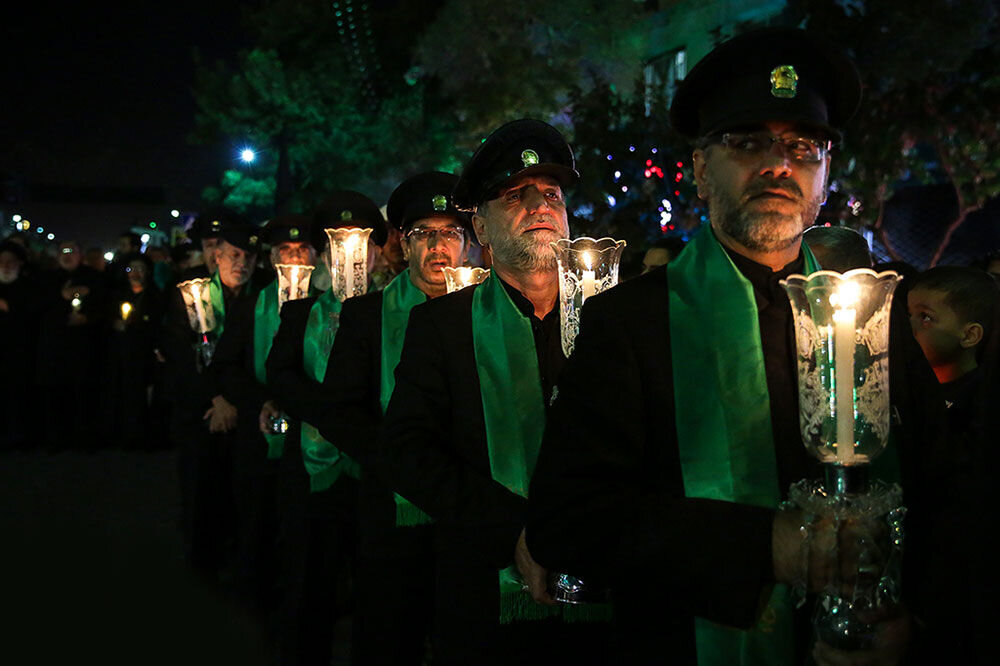A glimpse of Muharram mourning rituals across Iran: Sham-e Ghariban

The night of Ashura in Iran is called Shaam-e Ghariban, meaning “the night of strangers” and those who are far from home and help. People light candles in holy places and gatherings in every corner of the country.
However, this morning ritual is enormously popular in Mashhad in particular within the holy shrine complex of Imam Reza (AS) and tens of Hussainiyas, mosques even private houses.
At that night, the servants of the shrine gather at Goharshad mosque yard of the shrine with candles in their hands. Then they mourn and perform chest-thumping.
During Muharram, apart from mosques, each neighborhood sets up its own establishment for the ceremonial processions of the month known as ‘Tekkiyeh’, which are venues for the gathering of mourners known as ‘heyat’ (literally meaning group or delegation) who honor the life of Imam Hussein (AS).
From a theological approach, religious rituals are perhaps a recreation of collective memories that help to shape what is known as collective identity, an essential foundation for a sense of belonging. One such ritual is the mourning ceremony. Rich with symbolism, most of which have historical values, these ceremonies are a platform where communal beliefs and ideas about life and death are acknowledged and as people unite in grief and hope for consolation, they search for new meanings of life and reevaluate and confirm the foundation of their beliefs.
Origin of Sham-e Ghariban
The event is held in commemoration of survived children who left alone after Ashura. The ceremony is held for sympathy and show the love of mourners toward Imam Hussein (AS) and his loyal companions.
AFM/
Leave a Comment